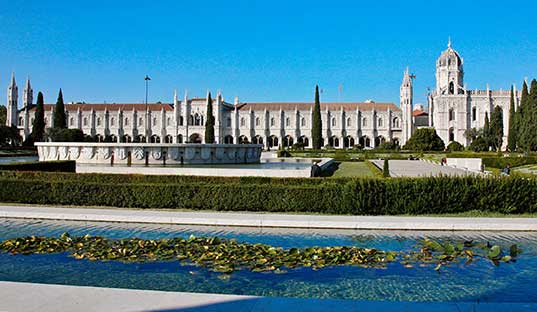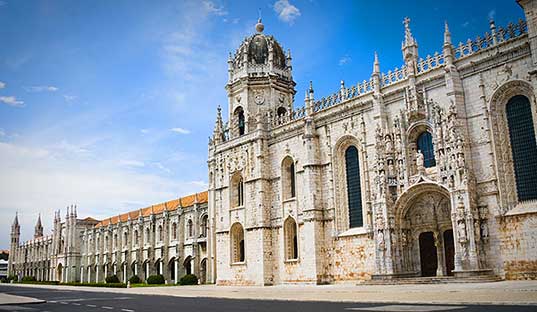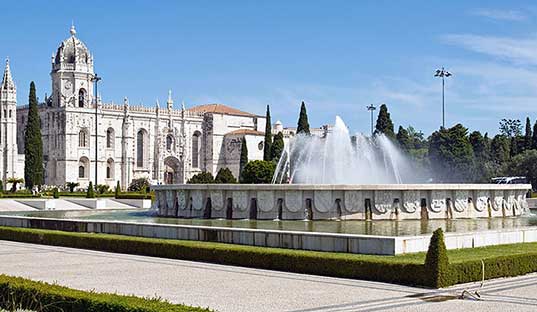Mosteiro dos Jerónimos
The Jerónimos Monastery is usually referred to as the “jewel” of the Manueline style. This exclusive Portuguese style combines architectural elements from the Gothic and from the Renaissance periods, joining them with a royal and naturalist symbology, that makes it unique and honourable.
In 1496, King D. Manuel I asked the Holy Sé for permission to build a large monastery on the banks of the river Tagus. The works started in 1501 and almost a century later everything was done. D. Manuel I and his descendants were buried in marble tombs located in the chancel of the church and in the transept lateral chapels.
Dedicating the monastery to the Belém Virgin was another factor that influenced the royal decision. The Jerónimos Monastery replaced the church of Saint Mary of Belém where monks of the Christ Order gave assistance to sailors passing through. For this reason, D. Manuel I chose the monks of the Saint Jerónimo Order whose functions were to pray for the soul of the king and give spiritual assistance to the sailors that left Praia do Restelo in discovery of new lands.
Because the monastery was built on the sand banks of the river Tagus, the great earthquake of 1755 had little effect on the structure.
In 1907 it was declared a National Monument and in 1984 it was classified “Cultural Heritage of all Humanity” by UNESCO.
There remains a lot to be said about this monument, but I leave you with one final word... AMAZING!
In 1496, King D. Manuel I asked the Holy Sé for permission to build a large monastery on the banks of the river Tagus. The works started in 1501 and almost a century later everything was done. D. Manuel I and his descendants were buried in marble tombs located in the chancel of the church and in the transept lateral chapels.
Dedicating the monastery to the Belém Virgin was another factor that influenced the royal decision. The Jerónimos Monastery replaced the church of Saint Mary of Belém where monks of the Christ Order gave assistance to sailors passing through. For this reason, D. Manuel I chose the monks of the Saint Jerónimo Order whose functions were to pray for the soul of the king and give spiritual assistance to the sailors that left Praia do Restelo in discovery of new lands.
Because the monastery was built on the sand banks of the river Tagus, the great earthquake of 1755 had little effect on the structure.
In 1907 it was declared a National Monument and in 1984 it was classified “Cultural Heritage of all Humanity” by UNESCO.
There remains a lot to be said about this monument, but I leave you with one final word... AMAZING!














